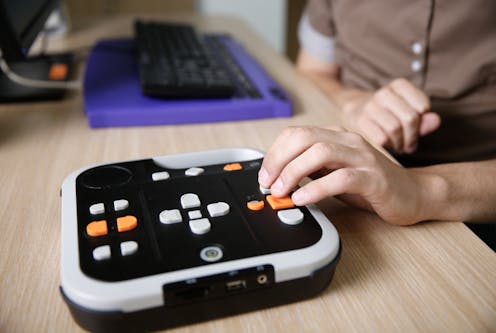From glasses to mobility scooters, 'assistive technology' isn't always high-tech. A WHO roadmap could help 2 million Australians get theirs

This month, the first ever World Health Organization (WHO) and UNICEF Global Report on Assistive Technology was released.
The WHO estimates one in three of us will need assistive technology, ranging from glasses to mobility scooters, in our lifetimes. This number is set to grow with an ageing population and the rising prevalence of non-communicable diseases such as heart disease and diabetes, which are major causes of disability.
For 2.5 billion people globally and more than two million Australians living with health, disability or age-related conditions, assistive products are vital in daily life. The WHO estimates almost one billion children and adults are denied the assistive technology they need.
The WHO/UNICEF report provides a range of recommendations for policy action that Australia’s new government should consider and learn from.
What is assistive technology?
If you use glasses or screen magnification on your phone, foot orthotics, hiking poles on uneven ground, or a powered mobility scooter to get to the shops, you are using assistive products. Reminder alerts on your mobile phone, smart home and text-to-speech technologies are also in this category.
Then there’s the information, professional recommendations and training needed to fit, troubleshoot, learn to use or maintain your assistive products. Together, these products and services are called “assistive technology”.
The return on investment for assistive technology is around nine times what is spent, because it enables people to work and study, worship and play, control their homes and move around their communities.
How does Australia measure up?
Let’s compare the top recommendations from the Global Report of Assistive Technology with Australian experiences.
1. Improve access to safe, effective and affordable assistive technology
Australia’s National Disability Insurance Scheme (NDIS) funds support for about 10% of Australians living with disability, including assistive technology products and services.
But outside the NDIS, Australians who need assistive technology often have very restricted access to funding.
They must navigate more than 100 different funding schemes in a “postcode” or eligibility lottery identified by the recent Aged Care Royal Commission as unfair.






